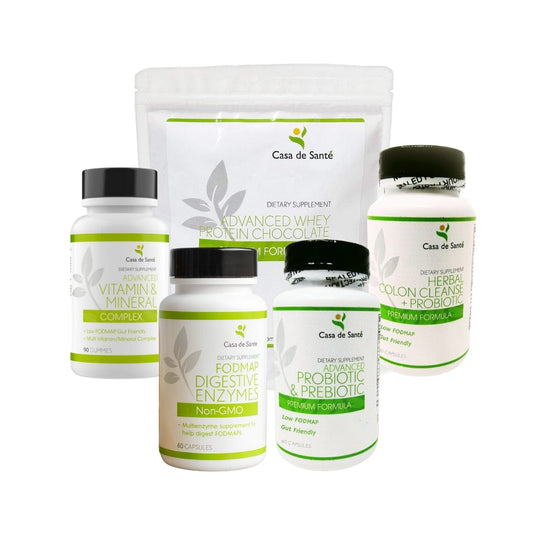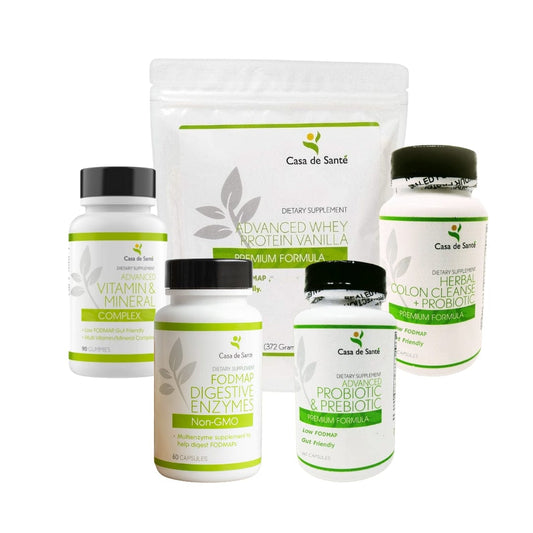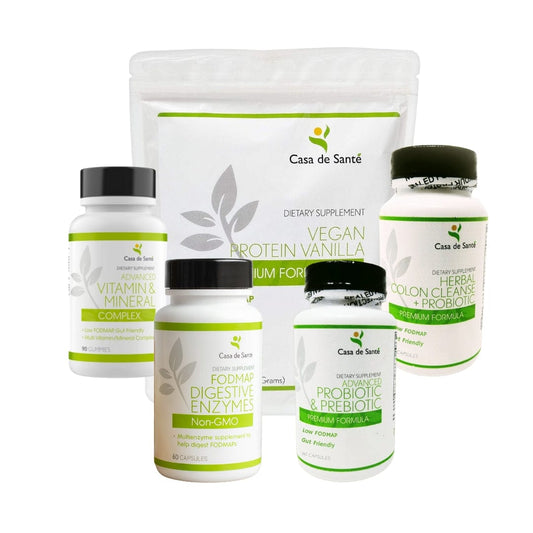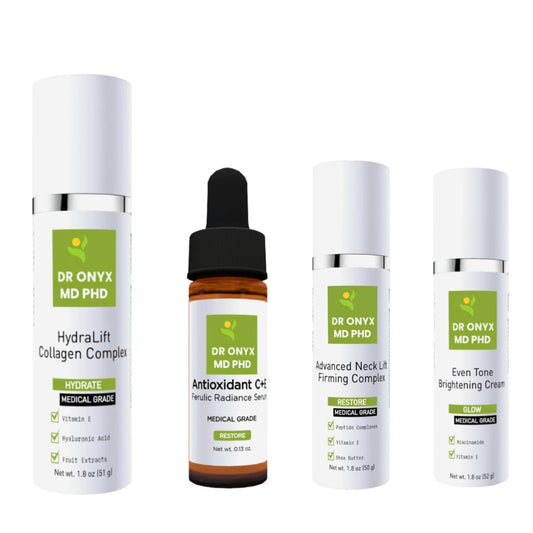Natural GLP-1 Tea: Benefits and How to Brew It at Home
In recent years, GLP-1 receptor agonists have gained significant attention in the health and wellness community. While pharmaceutical options like Ozempic and Wegovy dominate headlines, many people are turning to natural alternatives that may help stimulate GLP-1 production in the body. One such option gaining popularity is natural GLP-1 tea – a simple, accessible way to potentially support metabolic health from your own kitchen.
This article explores the science behind GLP-1, how certain teas may help stimulate its natural production, and provides practical recipes for brewing these beneficial beverages at home. Whether you're looking to support weight management, improve digestion, or simply enhance your overall wellness routine, understanding the potential of GLP-1-boosting teas could be a valuable addition to your health toolkit.
Understanding GLP-1 and Its Role in the Body
GLP-1 (Glucagon-Like Peptide-1) is a hormone naturally produced in the intestines when we eat. It plays several crucial roles in metabolic health, including regulating blood sugar levels, slowing gastric emptying, and promoting feelings of fullness. These functions make GLP-1 particularly interesting for those concerned with weight management and blood sugar control.
When GLP-1 is released, it signals the pancreas to produce insulin, which helps move glucose from the bloodstream into cells. Simultaneously, it suppresses glucagon, a hormone that raises blood sugar. This dual action helps maintain balanced blood glucose levels. Additionally, GLP-1 slows the rate at which food leaves the stomach, creating a prolonged feeling of satiety that may help reduce overall calorie intake.
The Connection Between Tea and GLP-1
Research suggests that certain compounds found in teas may help stimulate the body's natural production of GLP-1. Polyphenols, particularly catechins and theaflavins found in various teas, have been studied for their potential to increase GLP-1 secretion. Green tea, black tea, oolong tea, and various herbal infusions contain different bioactive compounds that may influence GLP-1 levels through various mechanisms.
While pharmaceutical GLP-1 receptor agonists provide a concentrated dose with predictable effects, natural teas offer a gentler approach. The compounds in tea work with your body's systems rather than directly mimicking GLP-1. This means the effects may be more subtle but potentially come with fewer side effects than prescription medications.
Who Might Benefit from GLP-1 Tea
Natural GLP-1 teas may be particularly beneficial for individuals looking to support weight management goals, those concerned about blood sugar regulation, or anyone seeking to improve digestive health. People with prediabetes or those at risk for type 2 diabetes might also find these teas helpful as part of a comprehensive approach to metabolic health.
It's important to note that while these teas may offer health benefits, they're not replacements for medical treatment. Anyone with diagnosed conditions like diabetes should consult healthcare providers before relying on natural remedies. That said, incorporating these teas into an already healthy lifestyle may provide additional support for metabolic wellness.
Top Teas That May Boost GLP-1 Production
Several varieties of tea have shown promise in potentially stimulating GLP-1 production or supporting metabolic health in ways that complement GLP-1 function. Let's explore some of the most promising options you can easily brew at home.
Green Tea: The Catechin Powerhouse
Green tea stands out as perhaps the most studied tea for metabolic benefits. Its high concentration of catechins, particularly epigallocatechin gallate (EGCG), has been linked to increased GLP-1 secretion in some research. Beyond potential GLP-1 effects, green tea's antioxidant properties and modest caffeine content may support metabolism and energy expenditure.
For optimal benefits, look for high-quality loose-leaf green tea varieties like Japanese Sencha, Chinese Dragonwell, or Gyokuro. These premium teas contain higher concentrations of the beneficial compounds than lower-quality tea bags. The brewing temperature is crucial for green tea – water that's too hot can destroy some of the delicate compounds, so aim for water between 160-175°F (71-79°C).
Oolong Tea: The Balanced Option
Oolong tea, which falls between green and black tea in terms of oxidation, contains a unique profile of polyphenols that may support metabolic health. Some research suggests that oolong tea consumption is associated with improved insulin sensitivity and may help with weight management, effects that align with GLP-1 function.
Traditional oolong varieties like Tie Guan Yin or Da Hong Pao offer complex flavors and potentially greater concentrations of beneficial compounds. Oolong can typically be brewed with slightly hotter water than green tea, around 180-190°F (82-88°C), and many varieties can be steeped multiple times, with each infusion revealing different flavor notes and potentially different beneficial compounds.
Herbal Options: Cinnamon and Ginger
Beyond traditional teas, certain herbal infusions may support GLP-1 function or offer complementary benefits. Cinnamon tea has been studied for its potential to improve insulin sensitivity and help regulate blood sugar levels. Some research suggests it may influence incretin hormones like GLP-1, though more studies are needed to confirm direct effects.
Ginger tea is another promising option, with studies indicating it may help slow gastric emptying – one of the same mechanisms through which GLP-1 works. This warming herb has also been linked to improved insulin sensitivity and may help reduce inflammation, supporting overall metabolic health. Both cinnamon and ginger can be brewed alone or combined with traditional teas for enhanced flavor and potential benefits.
How to Brew the Perfect GLP-1 Tea at Home
Creating effective GLP-1-supporting teas at home is simple once you understand a few key principles. The quality of ingredients, proper brewing techniques, and consistent consumption all play important roles in maximizing potential benefits.
Basic Brewing Guidelines
Start with filtered water whenever possible, as chlorine and other chemicals in tap water can interfere with the delicate flavors and compounds in tea. Pay attention to water temperature based on the type of tea you're brewing: cooler for green teas (160-175°F), moderate for oolongs (180-190°F), and hotter for black teas and most herbals (205-212°F).
Steeping time also varies by tea type. Green teas typically need just 1-3 minutes, while oolongs can be steeped for 3-5 minutes. Herbal infusions often benefit from longer steeping times of 5-10 minutes to fully extract their beneficial compounds. Using a timer can help prevent over-steeping, which can result in bitter flavors and potentially degraded beneficial compounds.
GLP-1 Green Tea Recipe
For a simple yet potentially effective GLP-1-supporting green tea, combine 1 teaspoon of high-quality loose-leaf green tea with a small piece of fresh ginger and a pinch of cinnamon. Heat water to about 170°F, pour over the ingredients in a teapot or infuser, and steep for 2-3 minutes. Strain and enjoy. This combination brings together the catechins from green tea with the complementary benefits of ginger and cinnamon.
For an iced version perfect for summer, brew the tea double-strength, then pour over ice. Adding a squeeze of lemon not only brightens the flavor but may help preserve the catechins in the tea, potentially making them more bioavailable. Avoid adding sugar, as it could counteract some of the metabolic benefits, but a small amount of honey or stevia is fine if you need sweetness.
Incorporating GLP-1 Tea Into Your Daily Routine
Consistency is key when it comes to experiencing the potential benefits of GLP-1 teas. Rather than viewing them as a quick fix, think of these beverages as part of a long-term wellness strategy that supports your body's natural functions.
Optimal Timing for Maximum Benefits
Some research suggests that consuming metabolism-supporting teas like green tea before or during meals may help maximize their impact on satiety and blood sugar regulation. Consider having a cup about 30 minutes before meals to potentially enhance the natural GLP-1 response to eating. Alternatively, some people find that replacing their morning coffee with green or oolong tea provides sustained energy without the crash that can sometimes follow coffee consumption.
Another effective approach is to spread your tea consumption throughout the day. This might mean enjoying green tea in the morning, oolong in the afternoon, and a caffeine-free herbal option like cinnamon or ginger tea in the evening. This strategy provides a steady supply of beneficial compounds while being mindful of caffeine's effects on sleep if consumed too late in the day.
Realistic Expectations and Complementary Habits
While natural GLP-1 teas offer promising benefits, it's important to maintain realistic expectations. These beverages are not miracle cures or direct replacements for medications. Their effects are generally subtle and work best when combined with other healthy habits.
For enhanced results, pair your tea routine with regular physical activity, which has been shown to increase sensitivity to GLP-1. Focus on consuming a diet rich in fiber from vegetables, fruits, and whole grains, as fiber can also stimulate GLP-1 release. Adequate sleep and stress management are equally important, as both can impact hormonal balance and metabolic function.
Remember that natural approaches often take time to show results. Commit to your tea routine for at least a few weeks before evaluating its effects. Pay attention to subtle changes in hunger levels, energy, and overall wellbeing rather than focusing solely on metrics like weight loss.
Conclusion
Natural GLP-1 tea represents an accessible, gentle approach to supporting metabolic health from your own kitchen. While these beverages don't deliver the concentrated impact of pharmaceutical GLP-1 agonists, they offer a holistic way to potentially enhance your body's own GLP-1 production and function, alongside numerous other health benefits.
By understanding the science behind GLP-1, selecting high-quality teas, and brewing them properly, you can create a daily ritual that may contribute to improved satiety, better blood sugar balance, and overall metabolic wellness. As with any natural approach to health, patience and consistency are key – the humble tea leaf may not work overnight miracles, but as part of a thoughtful wellness routine, it offers promising potential for those seeking natural ways to support their health journey.

















